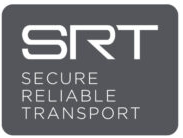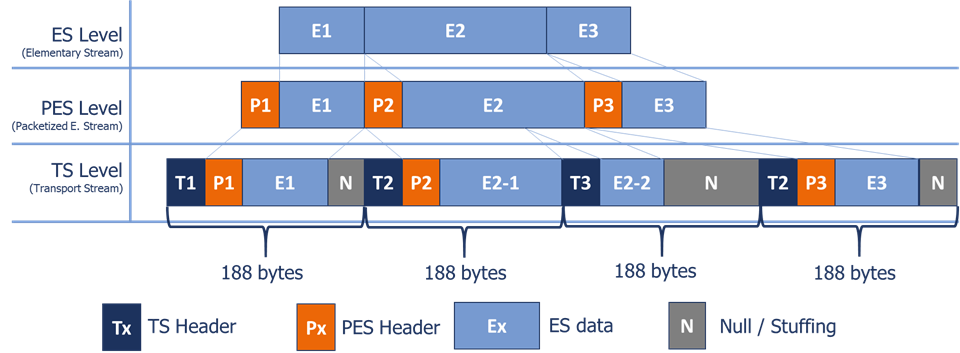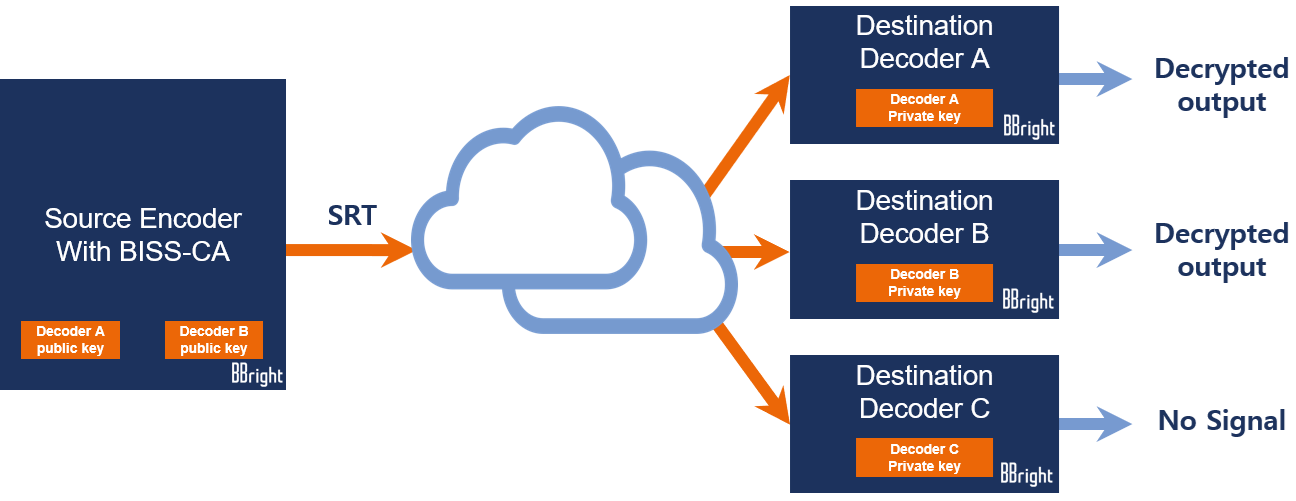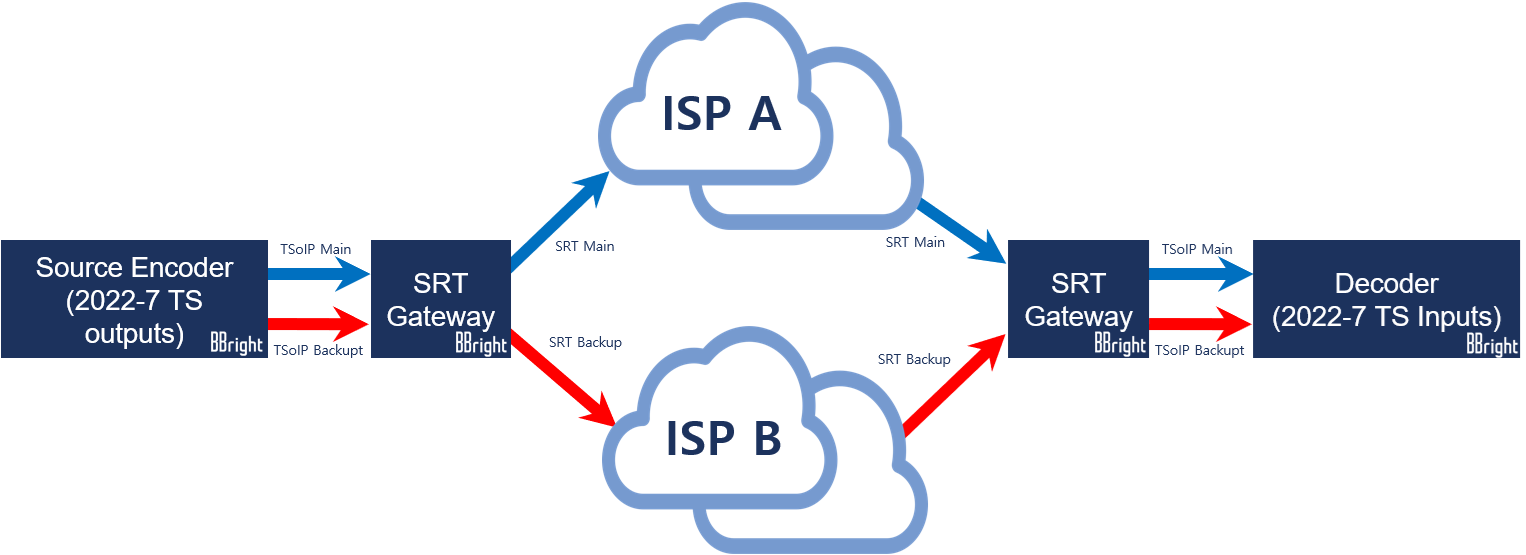Why SRT will drive the future of broadcast contributions?
Blog & white papers
24 July 2024

Instead of presenting another generic overview of the SRT protocol, let’s discuss it with a methodical and precise approach. With numerous experiences and new perspectives on this technology, we can now offer a more comprehensive analysis.
Let’s start from the beginning…
In the 1990s, the digital revolution transformed broadcasting. By 1995, new standards emerged: DVDs replaced VHS tapes, and terrestrial or satellite broadcasting adopted digital formats. On July 10, 1995, the MPEG-TS (MPEG Transport Stream) standard was published, defining the protocol for transporting media streams composed of video, audio and metadata. Its primary applications included satellite and terrestrial TV broadcasting, which are unidirectional communication links ideal for sending the same signal to a vast number of receivers without feedback from the recipients. MPEG-TS incorporated numerous mechanisms to ensure reliable transport, such as Forward Error Correction (FEC), packetization, and multiplexing of multiple elementary streams. The objective of the TS was to be able to transport one or more TV programs in a stream, each program consisting of a video stream accompanied by one or more audio streams, subtitles, and signaling information.
Let’s start by recalling the specifics of transport stream (TS), which as its name suggests is not a file format but a stream format. TS is a synchronous stream of 188 Bytes TS packets (or 204 Bytes), each TS packet containing a 4 bytes header, an optional adaptation field, and a payload. A TS is a multiplex of multiple elementary streams, each elementary stream being a sequence of TS packets with the same PID (Packet Identifier) value in its header.
Do not forget that initially, this standard enabled the first deployments of digital TV.
Simultaneously, the internet was becoming mainstream (with Microsoft launching Internet Explorer on August 16, 1995), making IP data exchange a common commodity. TCP (Transmission Control Protocol) emerged as the dominant communication protocol, enabling bidirectional data exchange where the receiver can acknowledge the receipt of data packets. At that time we were far from imagining that one day OTT streaming would be used in every home.
Evolution and Persistence
Nearly 30 years later, the Transport Stream (TS) is still prevalent. It has evolved to transport H.264, HEVC, ultra-high-definition content, and spatial audio. TS is used in streaming protocols like HLS (HTTP Live Streaming) or MPEG-DASH (Dynamic Adaptive Streaming over HTTP), and it’s still integral in contribution environments for transporting HD video at 10 Mbps H.264 or high-quality formats like JPEG-2000 (VSF TR01) or JPEG-XS (VSF TR07).
The Internet Advantage
With improved internet connections, transporting high-bitrate streams is now feasible, leveraging the internet rather than dedicated satellite channels or fiber connections. However, ensuring reliable TS transmission over the internet remains a challenge. Streaming protocols like DASH or HLS have high latencies (at least few seconds) unsuitable for contributions, and TCP’s acknowledgment mechanism is inefficient for high-bitrate streams, increasing bandwidth demands and preventing low latencies.
For unidirectional communication like satellite, FEC is effective. For bidirectional communication, Automatic Repeat Request (ARQ) is more suitable. ARQ reduces the volume of acknowledgement communications, requesting retransmission only for missing packets. SRT (Secure Reliable Transport) incorporates ARQ mechanisms, optimizing UDP with minimal control information. Simplified, SRT operates as follows: it assumes all packets are received unless the receiver requests a missing packet to be retransmitted.
Today, if we look at the main contribution paths used, we find dedicated links (satellite or fiber), but more and more SRTs using a simple internet connection:
What’s SRT?
SRT, an open-source protocol developed by Haivision, facilitates live video transmission over the internet (point-to-point). It offers robustness and security. In a very simplified way, it can be represented as follows:
Key Features:
- Robustness: Using ARQ, SRT reliably transmits video streams despite internet communication instabilities. It leverages UDP’s efficiency with added control information to retransmit missing packets.
- Security: SRT encrypts streams with AES-256, ensuring only authorized receivers with the correct passphrase can decrypt the content.
Modes of Operation:
SRT simplifies firewall traversal and network security configurations with three modes:
- Caller: Initiates communication via a handshake, knowing the public IP and port of the Listener.
- Listener: Listens for SRT streams on a specified port, requiring only the port information.
- Rendezvous: Both ends can initiate the handshake, facilitating communication.
An important point: the caller is not necessarily the encoder! Let’s make a telephone analogy between two people: the Caller is the one who initiates the conversation, and the Listener is the one who answers. But be careful, the caller is not necessarily the one who will talk the most!
Another essential point of the SRT with regard to IT constraints: These handshake mechanisms help SRT navigate firewalls without compromising internal security policies.
Now a little example, with the network configuration above:
- If the encoder is in Caller mode: The encoder will need the Public IP & Port (45.41.52.10:1000) of the destination decoder (set in Listener mode), whereas the decoder will just have to configure its local port (1234 in this example).
- If the encoder is in Listener mode mode: The encoder will just need the local port to listen (5000) , whereas the decoder (in Caller mode) will need to know the public IP & Port of the encoder (164.5.12.1:6000).
- If both are in RendezVous mode: both will have to know the public IP & Port of the other side.
SRT in Practice
Overall, SRT performs well in real-world applications despite competition from proprietary protocols like Zixi or open-source alternatives like RIST. BBright has implemented SRT in its IP transport solutions (decoders, encoders, and gateways) for several years. Most issues encountered (>80%) are due to network infrastructure problems (e.g., closed firewall ports, or confusion between local and public IP/port values) or passphrase errors (character entry error, an i becomes an l, a 0 an o…).
Advantages
SRT’s ability to transport TS means existing tools and standards for TS validation, like DVB ETR-290 recommendations, remain applicable. For example, an error-free SRT transmission indicates a valid TS, allowing the reuse of monitoring probes and tools.
Applications
SRT’s TS transport capability broadens its application scope:
- Remote Production: Facilitates the remote production of HD H.264 streams at 10-15 Mbps, allowing for high-quality live event broadcasting without the need for physical proximity.
- Point-to-Point Transmission: Ideal for permanent transmissions, such as replacing satellite links with internet-based solutions, offering cost savings and flexibility.
- Primary Distribution Networks: Can be used within cloud infrastructures for distributing primary content streams, enhancing scalability and accessibility.
- Ultra-High-Quality Live Streaming: Supports ultra-high-definition applications using advanced codecs like JPEG-XS, providing superior video quality for live broadcasts.
Enhancements and Future Possibilities
Since SRT transports TS, additional security measures like BISS-CA can be applied. BISS-CA encryption allows certificate-based encryption, enabling selective deauthorization of receivers without impacting others. BBright has deployed such solutions, enhancing SRT’s security. In the example below, only decoders A & B are authorized to decrypt the content of the SRT stream. The decoder C, even if it has access to the SRT stream, is not authorized to receive this transmission.
SRT can also incorporate full redundancy layers, such as 2022-7. A source can provide two TS streams (main and backup), transmitted via SRT and received by a gateway, maintaining dual 2022-7 redundant streams for the receiver. This ensures uninterrupted service even if one stream encounters issues. Ideally, we can consider the use of two different Internet Service Providers (ISP) for the transport of main and backup streams.
(Example of seamless 2022-7 redundancy setup over SRT)
It’s important to remember that SRT (Secure Reliable Transport) is an open-source protocol. As an open standard, it is continually evolving and improving. For instance, the recent addition of bonding functionality offers a robust alternative to technologies like SMPTE 2022-7 for network redundancy. Additionally, upcoming updates include support for multicast, further expanding the versatility and applications of SRT in various streaming and broadcasting scenarios.
The inherent flexibility of SRT allows for innovative applications:
- Integration with Emerging Technologies: Potential integration with emerging technologies like 5G can further enhance SRT’s applicability in mobile and remote environments.
- Customizable Security Layers: Organizations can tailor security protocols to their specific needs, combining SRT’s encryption with additional layers like BISS-CA for enhanced protection.
Conclusion
In summary, the SRT protocol enables video contribution over the internet, replacing satellite, fiber, or terrestrial communication. It leverages the bidirectional nature of internet connections while retaining the advantages of UDP, optimizing latency and bandwidth. SRT’s TS transport capability ensures compatibility with existing monitoring and validation tools and supports evolving video and audio codecs. Additionally, SRT can be enhanced for specific needs, such as using BISS-CA for stronger security control.
Key Takeaways
- Efficiency: SRT optimizes video transmission over the internet with minimal latency and bandwidth usage.
- Security: Built-in AES-256 encryption ensures secure content delivery.
- Compatibility: Supports existing TS tools and standards, allowing seamless integration with current workflows.
- Flexibility: Adaptable for various applications, from remote production to high-quality 24/7 contributions.
- Enhancements: Can incorporate additional security and redundancy measures for specialized needs.
By leveraging SRT, broadcasters and content providers can take full advantage of internet connectivity to deliver high-quality video content reliably and securely.
Let’s not forget the essentials: the user experience! New streaming platforms now offer a personalized experience. For example, during a Formula 1 or IndyCar car race, fans can select the viewpoint of their favorite driver on their tablet or Smart TV. This is made possible by transmitting a greater number of media streams between the capture locations and the broadcasters, and thanks to Secure Reliable Transport (SRT), this can be achieved without significant additional costs. If you have specific use cases in mind, BBright is here to help!
Even though satellite and fiber will still be used for many years, internet transmission of contribution streams via SRT is set to boom in the coming years. The SRT standard continues to improve, allowing for the preservation of broadcast habits with the use of transport stream and enabling an increase in the number of streams without raising transportation costs. The SRT positions itself as a crucial component in the shift towards all-IP networks, similar to how the 2110 standard is gradually replacing the traditional SDI format.






